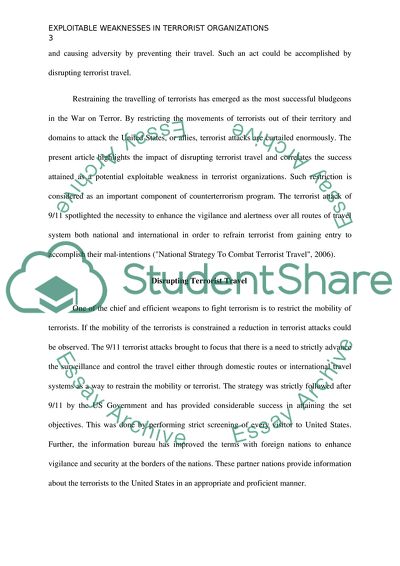Cite this document
(Potential Exploitable Weakness in Terrorist Organizations Term Paper, n.d.)
Potential Exploitable Weakness in Terrorist Organizations Term Paper. Retrieved from https://studentshare.org/social-science/1781591-disrupting-terrorist-travel-to-exploit-weaknesses-in-terrorist-organizations
Potential Exploitable Weakness in Terrorist Organizations Term Paper. Retrieved from https://studentshare.org/social-science/1781591-disrupting-terrorist-travel-to-exploit-weaknesses-in-terrorist-organizations
(Potential Exploitable Weakness in Terrorist Organizations Term Paper)
Potential Exploitable Weakness in Terrorist Organizations Term Paper. https://studentshare.org/social-science/1781591-disrupting-terrorist-travel-to-exploit-weaknesses-in-terrorist-organizations.
Potential Exploitable Weakness in Terrorist Organizations Term Paper. https://studentshare.org/social-science/1781591-disrupting-terrorist-travel-to-exploit-weaknesses-in-terrorist-organizations.
“Potential Exploitable Weakness in Terrorist Organizations Term Paper”, n.d. https://studentshare.org/social-science/1781591-disrupting-terrorist-travel-to-exploit-weaknesses-in-terrorist-organizations.


